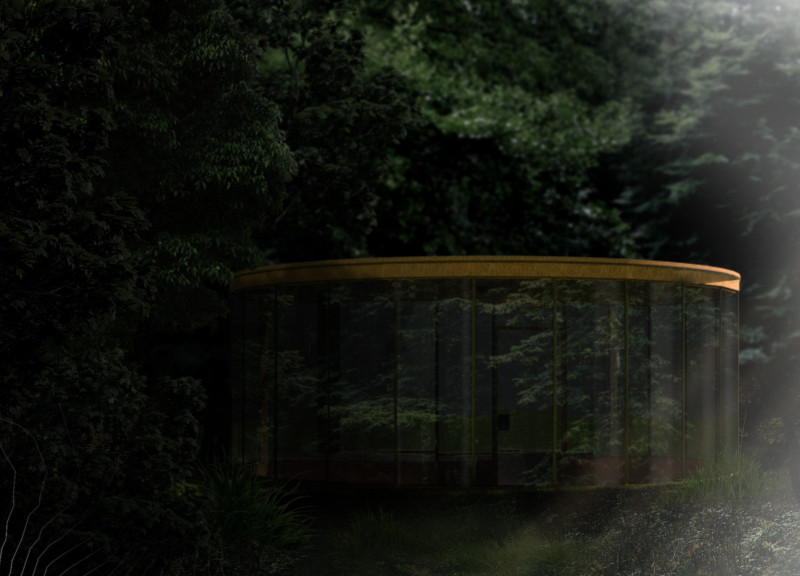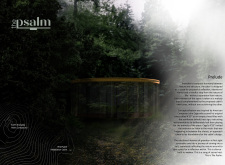5 key facts about this project
The Psalm is a meditation cabin located within the Earth Energies Main Compound. It is designed as a space for reflection and mindfulness. The overall concept highlights the connection between the structure and its natural surroundings, creating an environment that encourages peaceful contemplation and a deep bond with nature.
Design Inspiration
The design is influenced by the idea of silence as expressed by American composer John Cage, specifically in his composition "4'33." This approach encourages visitors to pay attention to the sounds of the environment. The cabin invites individuals to pause, listen, and experience the stillness around them, making it a space for quiet observation.
Spatial Integration
The cabin features reflective facades that connect the building with the landscape. This design choice allows light to enter and shapes the atmosphere inside. Large, one-way window panels provide privacy, allowing users to focus inward without losing sight of the natural beauty outside. These elements combine to create a space where the inner self can connect with the external world.
Material Selection
The materials used in the cabin emphasize a relationship with the local area. Local Matai timber is used for the structure, providing a natural appearance that blends with the setting. Industry-standard glass panels offer transparency while allowing for efficient construction. Opaque tinted glass films enhance privacy and support a calm environment by reducing outside distractions.
Environmental Features
The layout includes a pathway that leads visitors down toward greater levels of tranquility, metaphorically grounding them in the essence of Earth energy. Additional water features enhance the atmosphere, reflecting light and producing gentle sounds that contribute to the overall experience. The design of the trellis roof provides shade, stimulating sensory encounters and encouraging visitors to engage with their surroundings.
The Psalm serves as both a space for meditation and an example of how architecture can connect with nature. The play of light within the cabin changes throughout the day, creating a variety of moods that invite deeper reflection.





















































